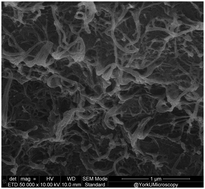Eliminating common biases in modelling the electrical conductivity of carbon nanotube–polymer nanocomposites†
Abstract
Modelling carbon nanotube–polymer nanocomposites to predict their electrical conductivity demands high computational power. Past research has led to the assumption that conductive networks follow a periodic pattern; however, the impact of the underlying biases had never been investigated. This work provides insights into evaluating such biases and eliminating them to improve simulation accuracy.



 Please wait while we load your content...
Please wait while we load your content...